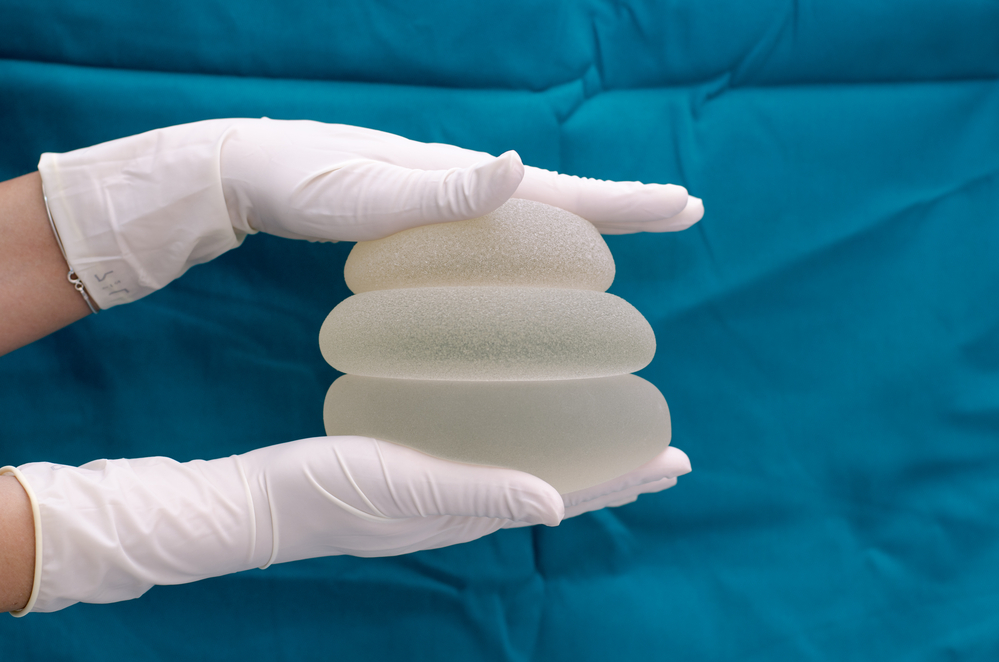Breast augmentation can boost your self-confidence, help you fit better in clothes, and balance the proportions of your body. However, breast implants aren’t designed to last forever, and you will likely need at least one revision surgery in your lifetime. Learn more about the longevity of your implants before you schedule a checkup at eSSe Plastic Surgery in Fort Lauderdale, FL
How Long Do Breast Implants Last?
In general, breast implants are designed to last for at least 10 years. This is true of all types of breast implants, including saline, silicone, and the newer gummy bear material. That said, some breast implants can last for 20 years or more, depending on implant placement, lifestyle practices, and other factors.
In fact, for many people who have breast augmentation, as long as implants remain in good shape, they may not need to have revision surgery. Implants that are in good shape can maintain the correct position in the breast, have no visible rippling, and do not display any other abnormalities as you age.
How Do You Know It’s Time to Replace Implants?
Although your implants can last for several years, it’s still important to know when to replace implants. Some of the most common signs that it’s time for replacement include implant rippling, ruptures, and capsular contracture.
Implant Rippling
For implants that are older, implant rippling is the number one sign that it’s time for a breast augmentation revision surgery. Typically, implant rippling occurs when the skin of the breast thins due to aging. When this happens, it’s common for people with implants to be able to feel the implant shell or material through the skin of the breast.
This is particularly true for implants that are placed above the pectoral muscle. Although implant rippling doesn’t indicate an issue with the implant itself, it can still feel strange or look odd. If you’re experiencing significant implant rippling, it may be a sign to have revision surgery and replace your implants with a smaller implant or different material.
Visible Abnormalities
If your implant is displaying visible abnormalities, such as asymmetry or concave shapes, this is a sign that the implant itself is not in good condition. Depending on the material of your implant, visible abnormalities can be a sign of implant deflation or other damage. When you notice visible abnormalities in your implant, this could also be an early sign of ruptures or other damage that will cause discomfort.
Implant Rupture
Implant ruptures typically happen when the material of the implant leaks into the surrounding breast tissue. Implant ruptures are more common with saline implants, but can also occur with silicone implants. Ruptures in silicone implants are sometimes also called gel fractures because of the small tear in the shell of the implant.
Is an Implant Rupture an Emergency?
An implant rupture is not considered an emergency. This is because the leak in the implant is usually slow enough that it will not compromise other aspects of your health, since you will be able to schedule a revision surgery with a cosmetic surgeon quickly. That said, it’s important to correct an implant rupture as soon as possible to prevent conditions such as capsular contracture or significant discomfort.
Capsular Contracture
Capsular contracture is the formation of an internal scar around the breast implant. Although capsular contracture usually happens within the first 12 months after breast augmentation surgery, it can also happen in response to damage to the implant. Capsular contracture is one of the most common reasons to have breast revision surgery.
Symptoms of Capsular Contracture
The early signs of capsular contracture include firmness in the breast and breast pain. As the internal scar tissue grows, the breast may feel very firm or tight. Capsular contracture can cause significant discomfort, so it’s best to seek revision surgery as soon as possible.
How Often Should You Have Your Implants Checked?
When you have breast implants, it’s best to schedule a check-up with your surgeon at least once every other year for saline implants and once every three years for silicone implants. Annual check-ups for your implants will ensure there are no problems with the implants and that you’re not forming scar tissue around the implant.
During a check-up for your implants, your surgeon will perform a basic breast exam. This exam will check for any lumps, bumps, rippling, or other abnormalities. During your check-up, your breasts will also be assessed for any knots or lumps on the natural breast tissue. Having your implants checked may be more challenging if implants were placed below the pectoral muscle since this could require an MRI scan to better assess the condition of the implant.
How Do You Perform a Self-Exam?
At home, you will be able to perform a self-exam for your implants every month, or as often as you feel comfortable. Just like a regular self-breast exam, checking your implants will require feeling around breast tissue to detect any lumps or changes.
To perform a self-exam for your implants, you will need to first locate the implant in the breast and palpitate your fingers down the side of the implant shell toward your ribs. From there, you should assess the natural breast tissue for any lumps or other developments, particularly around the armpit.
How Can You Check Silicone Implants?
Because silicone implants are made with a firmer material, the most reliable way to check the status of these implants is with an MRI scan. MRI scans will be able to check both your natural breast tissue and the state of the silicone implant, which can be helpful in identifying early abnormalities in silicone implants.
Can Mammograms Check Implants?
Women who are over 35 should have mammograms every year to detect signs of breast cancer. If you have implants, you should also attend all mammograms to check on the integrity of your implants and assess the health of your natural breast tissue.
Because mammograms are a type of x-ray for the breast, these exams can look through natural breast tissue to also check on implants. This may be particularly important if you have older implants that you do not intend to replace with revision surgery.
Can Mammograms Damage Implants?
Although mammograms are necessary for breast health, people who have implants should be aware that mammograms can possibly damage implants. This is because the mammogram machine will squeeze breast tissue, which could exert enough pressure to damage the implant and cause a rupture.
As much as 60% of people who have implants report implant ruptures following a mammogram. This is why it’s a good idea to monitor your breasts for the first month after you have a mammogram, since this can be key in detecting early signs of ruptures or other damage to the implant. You can check the condition of implants after a mammogram with a monthly self-exam.
Do Implants Shrink Over Time?
Some people who have older implants believe that implants can shrink over time. However, the size and shape of implants should remain static for as long as they are in your breast. This means that the implant itself will not lose volume or change shape unless there is damage to the implant, such as a rupture.
So what causes the illusion of a shrinking implant? Essentially, as you age, the skin of your breast will thin and the amount of fatty tissue on your breasts will also decrease. Because of these changes, it can make it seem like your breasts or your implants are getting smaller.
Is Implant Replacement Similar to Breast Augmentation?
If you do intend to have an implant revision surgery, you’ll be happy to learn that revision surgery is very similar to breast augmentation. During this procedure, the old or damaged implant will be removed and a new implant will be inserted. Before your revision surgery, you have the option to change the size, shape, and material of your implants.
Schedule an Exam for Your Breast Implants Today
Implants are designed to last for 10 to 20 years on average. Whether you intend to have a revision surgery or not, it’s important to understand the signs of damaged implants. For example, if you have breast pain or visible rippling from your implant, these are signs that you may need to have revision surgery. Contact eSSe Plastic Surgery in Fort Lauderdale, FL to schedule an exam for your implants today.



